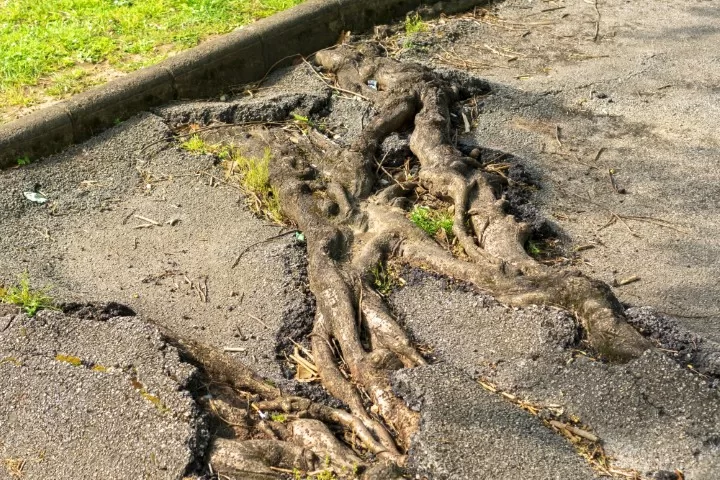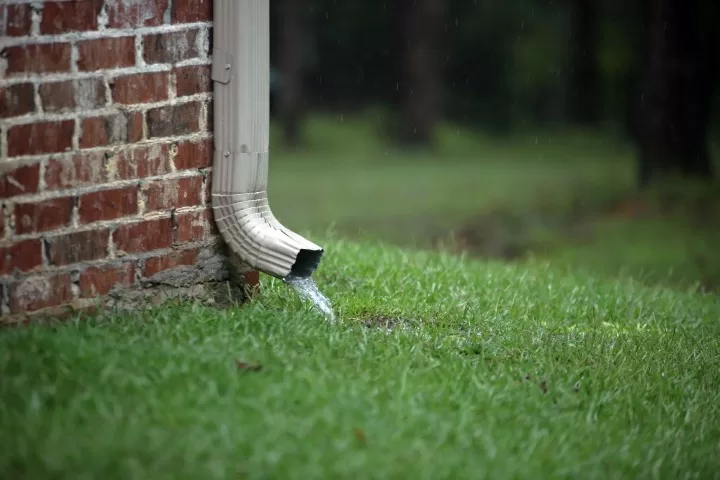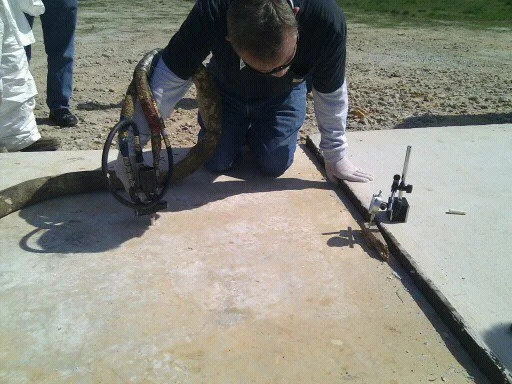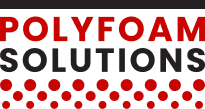
Cracks in concrete and uneven pavement are common occurrences that are caused by concrete settlement. But just because you have a concrete patio or driveway does not mean that these disruptions are inevitable.
There are a few main causes of concrete settlement and cracking that can be easily prevented and maintained so your concrete can look smooth and complete.
1. Soil Erosion
Over time, the soil under your concrete may shift and be worn away due to the changing of the weather. As water from rain, snow, and ice settle under your concrete slabs, they can begin to erode the soil away. This is especially likely from heavy rainfall, poor drainage, or plumbing leaks.
As the soil underneath begins to shift and erode, then your concrete does not have as much evenly distributed support to remain even and it can lead to gaps, cracks, or an imbalanced surface.
2. Tree Roots
Though everyone loves the look and feel of having trees around your property, they should be monitored and maintained to ensure they don’t cause problems in your concrete. As their roots grow and seek water underground, they can push up dirt and concrete, leading to damaged slabs.

3. Heavy Loads
Though concrete seems to be quite durable, it can sometimes buckle under the pressure of heavy loads. Any heavy equipment, vehicles, or structures can slowly push down the concrete and cause it to sink and settle into the ground. This means that those areas can become uneven and broken, ruining the concrete.
4. Shrinking & Expansion
Oftentimes, soil will shrink and expand, often due to temperature changes throughout the year. If there is moisture in the ground, any heat will cause the soil to expand, pushing up anything on top of it. When it gets colder, the moisture will make the dirt shrink. Especially during months where there are big temperature fluctuations between day and night, this can lead to rapid movement in the earth.
Any concrete on top of the shifting soil can then easily break apart, lift up, and sink as it adjusts with its foundation.
5. Poor Soil Compaction
If soil doesn’t have the proper compaction before concrete is laid on top, then this means an insecure foundation. It’s more prone to shrinking, expansion, and other movement if it has not been made compact enough. To prevent unwanted concrete settlement, you should have a solid foundation underneath.
Preventions
Though concrete settlement is undesirable, there are certain preventative measures that can be taken to help reduce the chances of damaged concrete.

- Improve Drainage
If you have problems with flooding around your concrete, then you may want to consider a better drainage system on your property to prevent erosion. Gutter and downspouts can help redirect water away from your concrete so it doesn’t impact the soil underneath. - Control Tree Growth
To help reduce the impact of tree roots, it’s best to try to plant new trees further away from your house, patio, and driveway. You may also want to install root barriers to keep them from growing toward or around concrete structures. - Limit Heavy Loads
If you are storing heavy equipment or vehicles, it’s best to store them properly instead of directly on your concrete slabs. Try to store them indoors, if possible, or use proper ground protection or protective covers, like cribbing, that will help to give proper support for the weight without damaging your concrete. - Choose the Right Soil
Some kinds of soil are better for maintaining your concrete. Crushed stone or sand are more durable and stable, allowing for drainage without impacting your concrete. Avoid softer materials, like clay-based soils, to minimize shifting or movement. - Thoroughly Compact Soil
Before laying your concrete, you will want to ensure that your soil is properly compact to provide the most supportive foundation for your concrete. A well-compacted soil will help to minimize concrete settlement. - Concrete Lifting
Another way to protect and maintain your concrete is through concrete lifting. This process facilitates polyurethane foam, which expands and hardens into a durable and water-resistant resin. Polyfoam can then be used to fill in gaps and offer support for your concrete to keep a smooth, even surface.

The Best Preventative Care
To best deal with concrete settlement, contact PolyFoam Solutions for a cost-effective and long-lasting solution. It is minimally invasive and a fast, easy process that saves you the headache of full concrete replacement. Reach out to us today to get your concrete back to new!

Follow Us